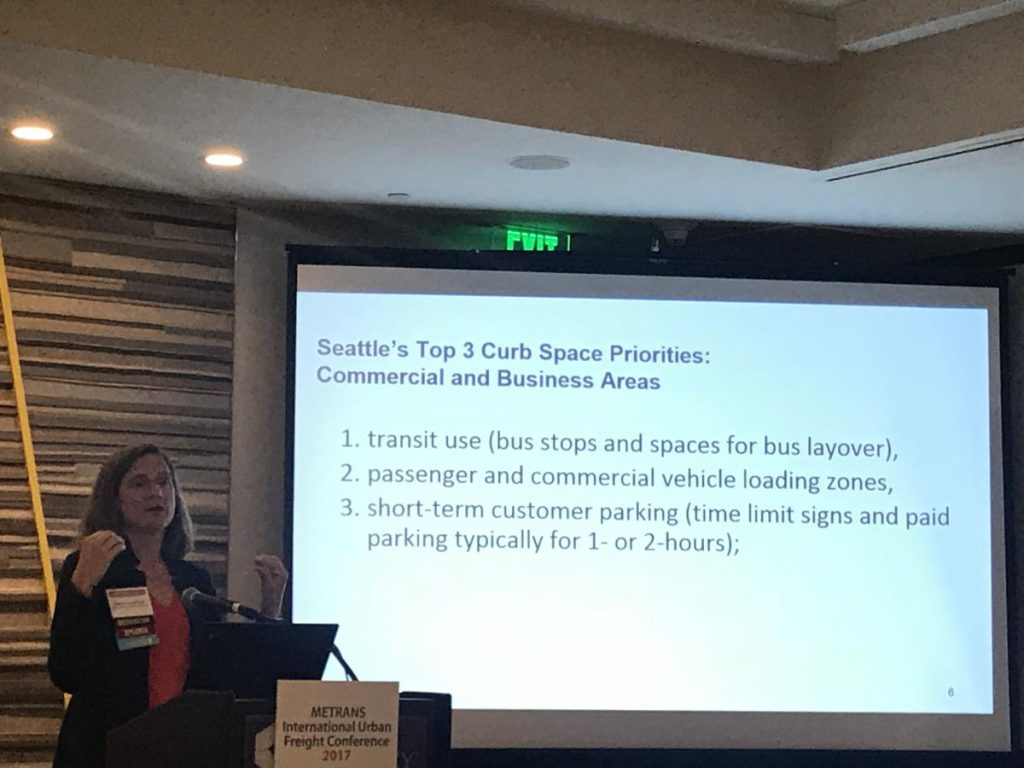
By Sue Dexter, USC Price School Ph.D. Student in Urban Planning and Development
METRANS held the 7th International Urban Freight Conference (I-NUF) from October 18-20, 2017 in Long Beach, California. The conference featured scholars and industry professionals from 18 countries presenting research on a broad range of topics, including effects of the growth of e-commerce, transformational technology, and other influences on urban freight movement. Break-out sessions and presentations were organized into seven tracks: local and last-mile pickup and delivery; trade nodes and hubs; freight modes; urban modelling and planning; new technology; changing consumption, production and spatial organization; and best practices. Plenary sessions convened all participants to address far-reaching, applicable issues for the entire goods movement industry.
As a PhD student focusing on freight studies, I was very impressed with the session The Final 50 Feet of the Urban Goods Delivery System on October 20th presented by Dr. Anne Goodchild, Supply Chain Transportation and Logistics Center, University of Washington.
Goodchild’s presentation opened with pictures commonly seen in the city: delivery trucks double-parked, trucks on sidewalks or parked against red curbs, and vans blocking bicycle and pedestrian right of ways. One such picture showed a bicyclist forced into congested traffic due to a double-parked truck.
But what are delivery drivers to do? They must convey their parcels. Goodchild noted that freight systems are often overlooked by city planners which can cause severe safety concerns, traffic congestion, delays, and other externalities. On-line shopping parcel distribution is compounding the problem since many apartments/condos often do not provide dedicated parking for deliveries. Trucks may be left unattended while deliveries are made to shops and homes. Depending on the size and complexity of the delivery, this could take minutes or much longer.
Seattle is now thinking about these issues and has published a policy outlining its three top curb priorities for commercial and business areas: 1) transit use (bus stops and spaces for bus layover); 2) passenger and commercial vehicle loading zones; and 3) short-term customer parking. Recognizing that curbs are valuable commodities, the city wants to use the space for loading and unloading only, not parking. If turn-around times can be shortened, capacity will increase. Efforts are underway to reduce dwell time for buses, for example, using e-cards which can speed up passenger payments.
The University of Washington’s Urban Freight Lab is studying the delivery process with the goal to reduce delivery dwell time and failed first-time deliveries. Members include retailers and urban truck freight carriers.